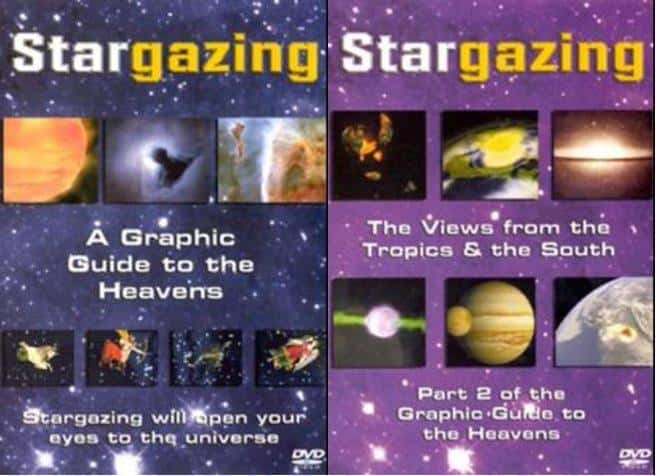|
|

外语原版纪录片《 Stargazing - A Graphic Guide to the Heavens 》 - 纪录片1080P/720P/360P高清标清网盘迅雷下载
纪录片关键词:
Stargazing - A Graphic Guide to the Heavens,40 Years on the Moon,60th Anniversary Special (BBC the Sky at Night),Astral Autumn,Beyond the Milky Way,Cosmic Front,Cosmic Voyage,Cosmos,Glorious Galaxies,Heavens Above,Hubble Trouble
Roger Liddle,Science,Others,2004,English,The Universe,Our Solar System,Astronomy
纪录片内容简介:
General Information:
Science Documentary hosted by Roger Liddle and published by Others in 2004 - English narration
Information
On a crystal-clear evening, on vacation perhaps, how often do we contemplate the night sky and promise to learn the stars and constellations? Somehow, we never get round to it. Charts in newspapers look too complicated. Astronomical handbooks are equally daunting.
STARGAZING is the answer - the night sky simply and beautifully mapped, an animated stellar atlas that works from anywhere on Earth. Season-by-season, it signposts and explains. Little by little - like learning a language - the cosmos is comprehensible.
STARGAZING is a glossy work of reference that will last and last. Animated vignettes turn points of light - stars, nebulae, galaxies - into supernovae, flashing pulsars, searing quasars and rotating swarms of 150-billion stars with supermassive black holes at their centres.
The sky is viewed from three latitude bands - from the mid-latitudes of the northern hemisphere (Japan, Europe, North America), from the tropics, and from the mid-latitudes of the southern hemisphere (Australasia and southern South America). There are no "talking heads", no interviews, no on-screen host.
[edit] Placemarkers
[edit] Northern Latitudes
Northern Hemisphere, Mid-Latitudes
Jan-Mar 0:00:00
look north 0:00:20
look south 0:06:22
Oct-Dec 0:15:28
look north 0:15:34
look south 0:21:56
Jul-Sep 0:30:24
look north 0:30:38
look south 0:33:54
Apr-Jun 0:44:12
look north 0:44:28
look south 0:48:33
[edit] Find your star sign
Taurus 0:58:44
Gemini 1:00:38
Leo 1:01:35
Virgo 1:03:12
Libra 1:04:21
Scorpius 1:04:53
Sagittarius 1:05:15
Capricorn 1:05:20
Aquarius 1:05:26
Cancer 1:05:37
Aquarius 1:06:08
Aries 1:07:14
Pisces 1:08:09
[edit] Tropics and South
The Equatorial Zone
Jan-Mar 0:00:05
look north 0:00:20
look south 0:01:33
The Equatorial Zone
Apr-Jun 0:03:45
look north 0:03:48
look south 0:05:28
The Southern Hemisphere, Mid-Latitudes
Apr-Jun 0:08:27
look north 0:08:40
look south 0:11:46
The Southern Hemisphere, Mid-Latitudes
Jan-Mar 0:18:45
look north 0:18:50
look south 0:24:35
The Equatorial Zone
Oct-Dec 0:28:50
look north 0:28:58
look south 0:30:40
The Southern Hemisphere, Mid-Latitudes
Jul-Sep 0:33:20
look north 0:33:30
look south 0:37:58
The Southern Hemisphere, Mid-Latitudes
Oct-Dec 0:45:05
look north 0:45:20
look south 0:49:55
(narration says 'Southern' Ends 0:54:43)
The Equatorial Zone
Jul-Sep 0:54:45
look north 0:54:57
look south 0:56:27
(narration says 'Equatorial' Ends 0:58:11)
How the Sky Works
Getting to know the night sky. Why the stars and constellations appear to move across the heavens. The stellar formations always visible from the northern and southern hemisphere. How to view them through binoculars and work out their positions from a sky chart. Why the planets seem to wander against the sky background sky.
January to March
The stars and constellations visible during the first quarter of the year. Firstly from the mid-latitudes of the northern hemisphere, secondly from the tropics, and thirdly from the mid-latitudes of the southern hemisphere. The familiar pattern of Orion, seen both in the northern and southern skies. How the stars in Orion change position on an imaginary spaceflight.
April to June
A guide to the stars and constellations visible from the northern hemisphere, the tropics and the southern hemisphere. Leo and Virgo in the north. Carina and Centaurus in the south. Why the positions of stars look fixed during a human lifetime but how they move over thousands of years.
July to September
A tour of the stars and constellations in the northern hemisphere, the tropics and the southern hemisphere. Cygnus and Lyra in the north. Scorpius and Sagittarius in the south. The glorious highlights of the Milky Way - a massive black hole lurking at the Galactic Centre.
October to December
The stars and constellations visible from the mid latitudes of the northern hemisphere, from the tropics, and from the mid-latitudes of the southern hemisphere. Pegasus and Andromeda in the north. The Magellanic Clouds in the south. How we know by studying galaxies that the Universe is expanding.
Vagabonds
Comets, asteroids and meteors - the wildcards of the Solar System. Why they hurtle through the sky in apparent random. Originating in the Asteroid Belt, the Kuiper Belt and the Oort Cloud, these icy remnants from the birth of the planets are cosmic vagabonds that both beguile us and threaten us.
Technical Specs
Video Codec: DivX5.1.1
Video Resolution: 576x432
Video Aspect Ratio: 1.33:1
Audio Codec: mp3
Audio Channels: 2
Number Of Parts: 2
Subtitles: English, Chinese
Ripped by bigbreaths
~~~~~~~~~~~~~~~~~~~~~~~~~~~~~~~~~~~~~~~~~~
外语原版纪录片《 Stargazing - A Graphic Guide to the Heavens 》 - 纪录片1080P/720P/360P高清标清网盘迅雷下载
下载地址:
(本链接可能为BT下载方式,需自备BT类下载工具。推荐使用115网盘离线下载,或使用其他具有离线下载功能的网盘)
|
小贴士:【影视自媒体解说文案请移步:夏至文案解说网 www.xiazhi.vip】上一篇:外语原版纪录片《 StarGazers 》 - 纪录片1080P/720P/360P高清标清网盘迅雷下载下一篇:外语原版纪录片《 Stargazing Live 2016 》 - 纪录片1080P/720P/360P高清标清网盘迅雷下载
|